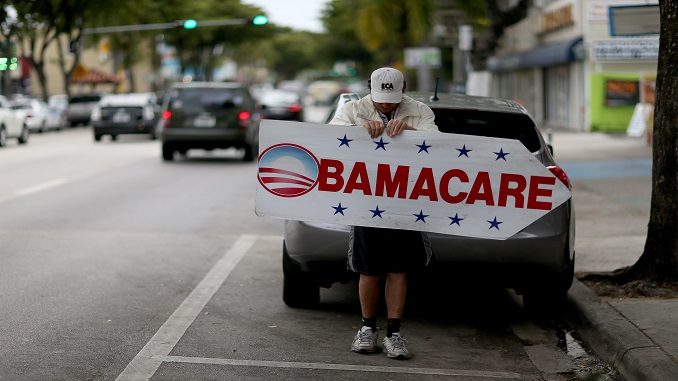
ObamaCare is showing its resilience after a year where in which it took a beating but survived. A surprisingly high number of people signed up under the law in the enrollment period that ended last week: 8.8 million, just short of the 9.2 million from last year.
The enrollment numbers suggest that a core group of people, though smaller than what architects of the law originally imagined, wants health insurance and will sign up despite any obstacles in their way.
“The ACA seems to have more lives than your neighborhood cat,” said Larry Levitt, a health policy expert at the Kaiser Family Foundation.
“It’s a smaller and less functional program than supporters had originally hoped, but it’s still doing the job of [keeping] the uninsured rate at the lowest level ever,” he added.
In Congress, the zeal among Republicans for repealing the law appears to be fading somewhat. Some lawmakers are still pushing to revive repeal efforts next year, but important figures are signaling that would be difficult and it could be time to move on.
“I think we’ll probably move on to other issues,” Senate Majority Leader Mitch McConnell told NPR.
He later acknowledged at a press conference that Sens. Lindsey Graham and Bill Cassidy will keep pushing their repeal and replacement legislation in the new year, but said simply, “I wish them well.”
With a 51-49 majority, he expressed doubts there would be enough votes to pass it.Then there are the polls that show ObamaCare’s approval above 50 percent, and exit polls suggesting healthcare played a role in bringing out Democratic voters in Virginia’s off-year election in November.
Republicans did deal a major blow to ObamaCare this month by repealing the individual mandate that requires people to buy insurance. Most experts don’t think it will be a death blow to the law, but some expect it could lead to premium hikes, or insurers dropping from the marketplace.
Ironically, the surprisingly high enrollment numbers announced this week are in part due to an action President Trump took that seemed aimed at hurting ObamaCare, experts say.
Trump cut off key payments to insurers known as cost-sharing reductions. To make up for the lost revenue, insurers raised premiums, but cleverly used the structure of ObamaCare to raise prices only on certain plans. That had the effect of increasing government subsidies that help people afford insurance.
The end result was a convoluted way to increase subsidies, which actually made plans more affordable for many people, helping to entice them to buy coverage. Another unexpected factor helping to boost signups could have been all of the publicity this year around the law — even if it was negative.
“The negative publicity from the Trump administration, every newspaper had a story on a regular basis,” said Joe Antos, a healthcare expert at the right-leaning American Enterprise Institute.

Be the first to comment